Background
Decision Fish applies the latest research in decision science, behavioral economics, corporate finance and user experience design to build a suite of apps that help people save money and reduce risk when making high-stakes, decisions, that align with personal values and create happiness. We are addressing an urgent social mission: to help people make better financial decisions, avoid debt and live happier, more secure lives.
My Role
Decision Fish is a small startup with three founders and a contracted designer and developer. My role at Decision Fish is Chief of Operations. While this role incorporated oversight of financial, facility and HR duties, I also developed the UX design and testing strategy, hired contract designers and wrote and carried out user research.
User Research Methods
Competitive Review
I performed a competitive review of similar applications available in the market, researched the problems and markets they addressed and evaluated gaps in prospective user needs. Many tools available for budgeting and planning focus on creating a budget based on prior expenditures and tracking and categorizing purchases as they happen. Most provide graphic tools for reviewing past performance (monthly or annual) and some have additional support for setting and tracking goals. Many assumed a certain level of financial literacy and do not provide education except for more basic financial concepts. Programs that provided a deeper knowledge require in class learning, which may not be retained, or ongoing personal coaching which can be costly.
Focus Groups and Workshops
I ran focus groups and financial wellness workshops to observe people discussing money issues and planning their finances. The focus groups took place at a career outplacement centers, local meetups and in our office. These incorporated informal discussions and affinity diagramming to understand how users feel while making different kinds of financial decisions.
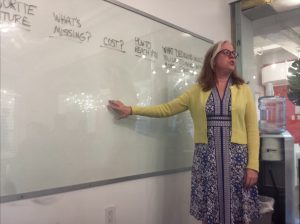
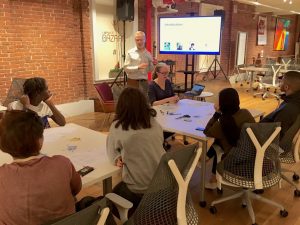
As we developed our web app, we also hosted formal financial wellness workshops at Impact Hub NYC and Hunter College School of Social Work. The workshops use mindfulness exercises, play money and a paper version of the app as we were developing it to help people understand how to budget and evaluate personal goals.
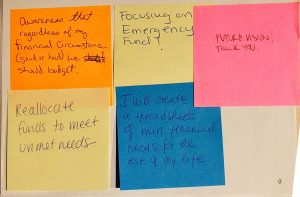
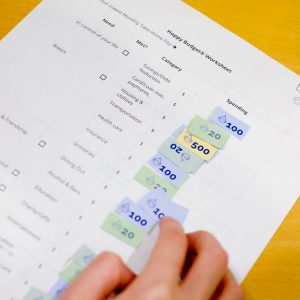
Moderated User Tests
Our initial user tests included a series of online and in-person walkthroughs of a pre-alpha home affordability application developed by the CEO/product manager in Excel. We did not screen participants a this stage as we were still learning what types of users to target and wanted to have a broad group. It was important at this stage to use Excel as our prototyping tool to have a realistic representation of a participant’s financial picture while saving on development costs. The test began with an interview about financial decisions and habits and general demographics and continued with a test of the Excel prototype. Participants spoke aloud as they went through the initial home affordability module.
The feedback from early testing indicated that a home affordability calculator was interesting, but would not be used very often. Insights from interviews indicated that people wanted more help planning and keeping on top of their budget. They liked the just-in-time learning and that the interactive design, though somewhat clumsy in Excel, was approachable.
Testing continued with Financial Planning and Budgeting modules developed again in an interactive Excel model. We invited prior participants and recruited from our newsletter subscriber list, members of our co-working space at Impact Hub and started to reach out to benefits providers, nonprofits and other potential customers.
One of the most common responses to the web app was “I really need this.” But we noted some issues with the workflow that overlooked some users’ situations, such as data fields and content that referenced children, which many, particularly older, female participants didn’t want to see. We also noted the dependence on a savings figure defined early in the program prevented some low income users and those with a lot of debt to continue to the budgeting module.
To do an unmoderated user test, and to provide a realistic program for B2B clients, we needed a working web app. Our developer team was entirely remote and I realized that the Axure prototype would be difficult to share, so we moved to an InVision prototype to allow better, real time collaboration. I worked on user flows, content and a style guide. We hired a designer to produce high resolution screens in Sketch and used a combination of Slack, Trello and InVision to discuss and document changes. The resulting web app became our private beta product and we were ready to continue.
Unmoderated User Tests
During the private beta launch of the Decision Fish web app, we began screening participants. We focused on employed users in low to middle income levels ($30,000 to $80,000 per year) and invited prior participants to sign up for an online account. We also targeted users through our Mailchimp campaigns and began inviting prospective partners, who serve or employ people in our target group.
Remote sessions were recorded via Hotjar’s session recording tool, which we like because of its GDPR data privacy compliance. Users were aware that we would track their usage but that the recorder would not show the data they entered. We added a Hotjar feedback button to encourage users to enter thoughts on any page as they were experiencing problems or to report on things they liked.
Tools
Prototypes: Paper, index cards, InVision, Axure, Excel
User Testing: Hotjar recordings and feedback forms, Google Forms, Surveymonkey, Craig’s List
Collaboration: Join.me, Zoom, Google Docs, Trello, Slack, Telegram
Artifacts
Early Prototype Screenshots
Below are prototypes from an early Azure version. The prototype interaction is overlaying an Excel based module created by the product manager.
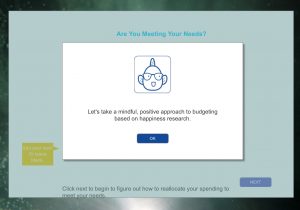
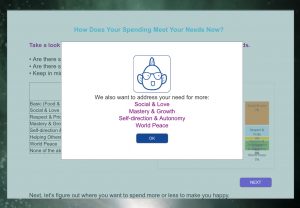
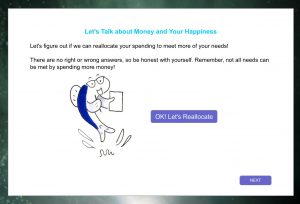
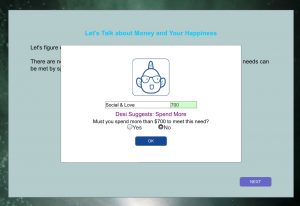
I also created mobile screens in Axure. The following screen shows the ability to add fields based on the number of children the user wishes to include.
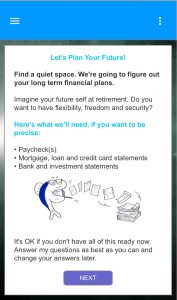
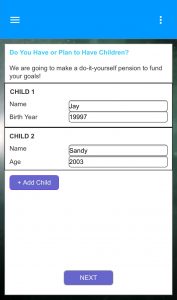
Collaborative Prototypes
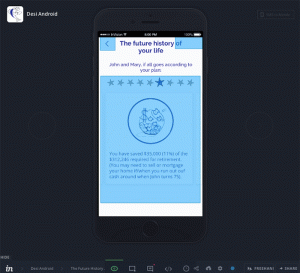
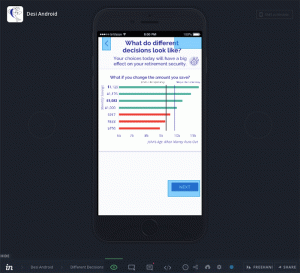
Private Beta
The following are screenshots from the web app launched in February 2016.
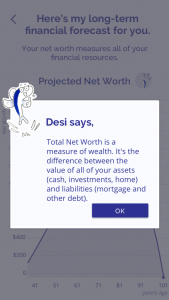
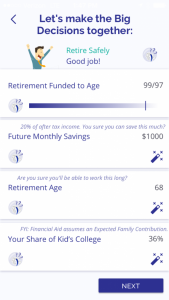
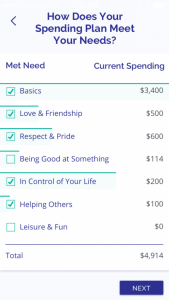
Recognition
As COO, I am involved with developing partner and funding prospects, financial and HR operations and competitive market research. I was selected as a 2018 Fellow in the Startup Leadership Program and secured spots in the NYU StartEd Incubator for 2017 and Impact Hub’s 2018 30 for 30 Cohort.
2018 MetLife Inclusion Plus Semifinalist
2018 Impact Hub 30 for 30 Cohort
2017 NYU StartEd Incubator
2017 Best for NYC Changemaker Award, B Lab and NYC EDC
2016 Semi-Finalist, Village Capital FinTech
Future Plans
We are continuing to seek B2B collaborators to conduct pilot tests. An ideal pilot partner would be an employer or affinity organization serving individuals in our target population, particularly low-to-middle income, employed individuals.
We are developing financial education content and pathways to address needs of immigrants, single parents, unmarried and divorced women, veterans and other potentially underserved populations.
We plan to add a learning tool or online class, and are researching AI chatbots and online forums. We plan to create an interactive forum where users can discuss their goals based on their Happy Budget profile.
